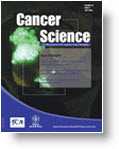OARSI:推荐膝、髋关节炎机能指标
2013-05-09 佚名 EGMN
美国费城——国际骨关节炎研究学会(ORSI)日前推荐了一套针对明确髋、膝骨关节炎患者的易于使用的身体机能指标。 最核心的检查包括30秒连续座椅站立、40米快步走和上下楼梯。另2项检查——起立-行走计时测试和6分钟步行——也获得了强烈推荐,建议根据研究设计将其用于检测ambulatory transitions和有氧能力。 指导委员会委员Kim L. Bennell博士在世界骨关节炎
美国费城——国际骨关节炎研究学会(ORSI)日前推荐了一套针对明确髋、膝骨关节炎患者的易于使用的身体机能指标。
最核心的检查包括30秒连续座椅站立、40米快步走和上下楼梯。另2项检查——起立-行走计时测试和6分钟步行——也获得了强烈推荐,建议根据研究设计将其用于检测ambulatory transitions和有氧能力。
指导委员会委员Kim L. Bennell博士在世界骨关节炎大会上指出,这些检查应当涵盖多种体力活动、采用尽可能少的设备,而且易于使用、成本低廉。
例如,30秒连续座椅站立测验只需要1只秒表和1把椅子就能实施,即计算患者在30秒钟内可以从椅子上起立(髋和膝完全伸展)和坐回去多少次。这一检查最适用于年龄>40岁的成年人,但对于轻度至终末期髋和(或)膝骨关节炎及接受了关节置换术的患者也有重要价值。
这个由10名风湿病学家、理疗师和1名整形外科医生组成的国际顾问委员会进行了文献综述,并对138名临床医生和研究人员进行了调查,要求其对23项功能检测用于骨关节炎患者的难度和可行性进行评级。他们提出的推荐意见旨在促进在各项临床试验和临床实践中对髋和(或)膝骨关节炎患者更加一致地使用基于机能的结局指标。
“我们试图找出在时间、成本、设备、空间和管理负担等方面总体上最可行的检测手段。”最终,没有1种检测能够满足所有标准(可靠性、测量误差、效度、响应性和可解释性)。专家们感觉上下楼梯是一项反映机动性、体力和平衡性的重要指标,但不愿推荐某种具体的检测手段,原因是缺乏临床测量证据,并且很明显并不是所有机构都有足够长的楼梯来实施9步或12步测验。
如果希望了解关于这些检测的更详细信息(包括一份指导手册、临床检测指标性能和标准值),可登录OARSI网站查阅。
这一项目由OARSI、澳大利亚国立健康与医学研究委员会、澳大利亚关节炎协会和Otago大学资助。Bennell博士报告称无相关利益冲突。
与关节炎相关的拓展阅读:
OARSI recommends physical function tests for knee, hip OA
PHILADELPHIA – The Osteoarthritis Research Society International is recommending a set of user-friendly physical performance measures for patients with established hip and knee osteoarthritis.
The minimal core set of tests includes the 30-second chair stand test, 40-m fast-paced-walk, and stair negotiation.
Two further tests, the timed up-and-go and 6-minute walk, also are highly recommended, depending on the research setting, to measure ambulatory transitions and aerobic capacity.
The tests had to cover multiple physical activities, use minimal equipment, and be user friendly and inexpensive, steering committee member Kim L. Bennell, Ph.D., said at the World Congress on Osteoarthritis.
For example, the 30-second chair stand test requires only a stop watch and a chair to count how many times a patient can rise from a chair with hips and knees fully extended and sit back down in 30 seconds. The tests are best suited for adults older than 40 years but are relevant for patients with mild to end-stage hip and/or knee osteoarthritis (OA) and following joint replacement.
Currently, there are no international recommendations on which performance-based measures of physical function should be used to measure outcomes in patients with hip and/or knee OA. The hope is that the new recommendations will facilitate a more consistent use of performance-based outcome measures across clinical trials and the clinical setting, said Dr. Bennell, a research physiotherapist and director of the multidisciplinary Centre for Health, Exercise and Sports Medicine, University of Melbourne (Australia).
An international advisory committee of 10 rheumatologists, physical therapists, and an orthopedic surgeon identified the main activity themes of walking, stair negotiation, and sit-to-stand from a systematic review of the literature and by consensus opinion. Another 138 clinicians and researchers also were surveyed and asked to rank the difficulty and feasibility of 23 functional tests for OA patients.
"We wanted to identify the most feasible tests considering practical issues such as time, cost, equipment, space, and administration burden," she said at the meeting, which was sponsored by OARSI.
In the end, none of the tests satisfied all desirable clinimetric criteria of reliability, measurement error, validity, responsiveness, and interpretability. The experts felt stair negotiation was an important measure of mobility, lower-body strength, and balance but balked at recommending a specific test because of insufficient clinimetric evidence and the simple, practical fact that not all facilities have enough stairs to conduct a 9- or 12-step test.
"What we really found in our discussions and our work is that there really wasn’t a lot of good clinimetric evidence across the board on these tests," Dr. Bennell said.
To boost the evidence base, OARSI has put out a call on its website to collect future prospective data and to pool existing data so researchers can calculate minimal clinically important difference (MCID) estimates for different OA subgroups, longitudinal responsiveness estimates for interventions, and normative data for various OA subgroups. {nextpage}
Further details on the tests, including an instructional manual, clinimetric measurement properties, and normative values, are available on the OARSI website. Videos will also be available shortly.
The project was sponsored by OARSI, the Australian National Health and Medical Research Council, Arthritis Australia, and the University of Otago. Dr. Bennell reported having no financial disclosures.
本网站所有内容来源注明为“梅斯医学”或“MedSci原创”的文字、图片和音视频资料,版权均属于梅斯医学所有。非经授权,任何媒体、网站或个人不得转载,授权转载时须注明来源为“梅斯医学”。其它来源的文章系转载文章,或“梅斯号”自媒体发布的文章,仅系出于传递更多信息之目的,本站仅负责审核内容合规,其内容不代表本站立场,本站不负责内容的准确性和版权。如果存在侵权、或不希望被转载的媒体或个人可与我们联系,我们将立即进行删除处理。
在此留言










#关节炎#
22